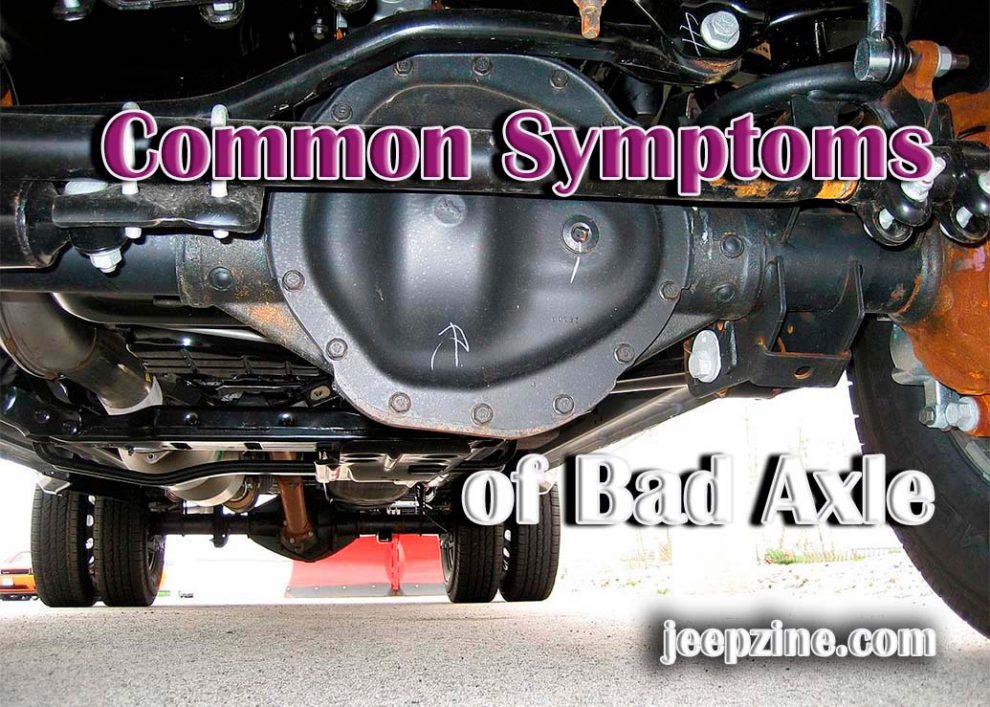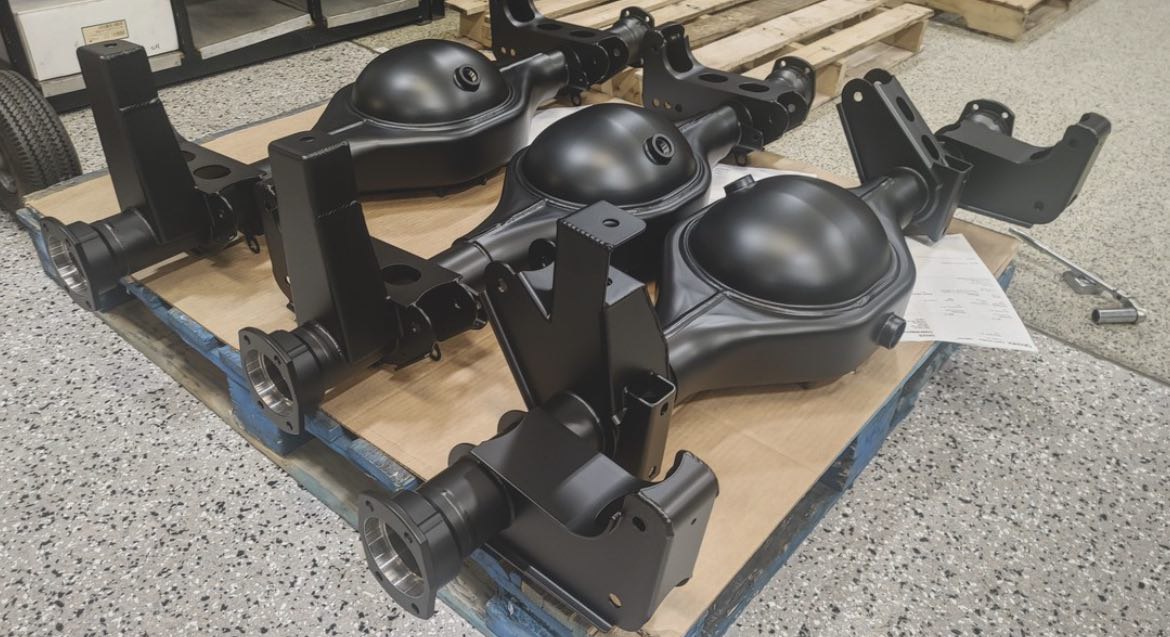A bad axle can lead to various problems with your car, truck, or SUV. Since the axle is an essential part of the drivetrain, it’s important to identify and repair any issues as soon as possible. In this article, we will discuss what an axle is and list common symptoms of a bad axle. We will also review how to diagnose and repair a bad axle.
What Is an Axle?
An axle is a fundamental component in a vehicle’s drivetrain system, crucial in enabling movement and supporting the vehicle’s weight. A straight shaft connects the wheels on either side of the car. The primary function of an axle is to transmit power from the engine to the wheels, allowing the vehicle to move forward or backward. In most vehicles, such as Jeeps, there are two axles – one for the front wheels and one for the rear wheels. Axles are typically made of sturdy materials like steel and must withstand significant torque and stress generated during vehicle operation. Depending on the vehicle’s design, axles may have CV (constant velocity) joints, allowing smooth rotation even during turns. Overall, axles are critical to a vehicle’s mobility and stability.
Common Symptoms of Bad Axle
When an axle fails, specific symptoms that indicate a problem appear. Some of the signs of a bad axle typically include:
-
Grinding or clunking sounds: If you hear grinding or clunking noises from beneath your vehicle, it is likely due to worn-out CV joints and bearings. A lack of lubrication or excessive wear on the axle components could cause it.
-
Excessive vibration during acceleration or turning: If you begin to feel an abnormal vibration when accelerating or turning, it may be due to worn-out components in the axle assembly. It could indicate an issue with the CV joints or wheel bearings and should be addressed immediately.
-
Leaking fluid: If you find a pool of liquid near the axle, it could be due to a leaking seal or gasket. It is important to check for any leaks in the axle assembly as soon as possible.
-
Excessive play in steering wheel when driving straight: When driving straight ahead, if there is excessive play in the steering wheel, it can point towards an issue with your vehicle’s axles and suspension components such as control arms and ball joints that are beginning to wear down prematurely.
-
Difficulty turning corners: If you encounter difficulty when turning corners or making sharp turns with your car, this could be caused by faulty axles as well due to excessive wear on the CV joints, causing them not to move correctly, which would limit their range of motion when turning corners sharply at higher speeds. Also read about Best Ball Joints for Jeep.
Diagnosing and Repairing a Bad Axle
A bad axle can be a significant vehicle issue and, if left unchecked, can lead to serious damage. The first step is to check the wheel bearing hub assembly for any visible signs of damage—if any signs of wear or tear could indicate a malfunctioning axle. If there is no visible damage, removing the axle shaft from the vehicle may be necessary to examine it further. Once the axle has been removed, inspect it visually and with a diagnostic tool to determine what damage has occurred. If the diagnosis reveals that only part of the axle needs repair or replacement, then repairs can begin immediately by replacing only necessary parts. However, if more extensive repair or replacement is needed, ask for professional help to ensure that repairs are done correctly and efficiently.
Conclusion
A bad axle can be a major issue with your vehicle, leading to various problems, such as grinding or clunking sounds, excessive vibration during acceleration or turning, difficulty turning corners, and leaking fluid. It is important to identify and repair any issues with the axle assembly as soon as possible to ensure your and your passengers’ safety. If you suspect that a bad axle may be causing problems with your car, truck, or SUV, it is essential to have it professionally inspected and repaired.


 Grinding or clunking sounds: If you hear grinding or clunking noises from beneath your vehicle, it is likely due to worn-out CV joints and bearings. A lack of lubrication or excessive wear on the axle components could cause it.
Grinding or clunking sounds: If you hear grinding or clunking noises from beneath your vehicle, it is likely due to worn-out CV joints and bearings. A lack of lubrication or excessive wear on the axle components could cause it.
Add Comment